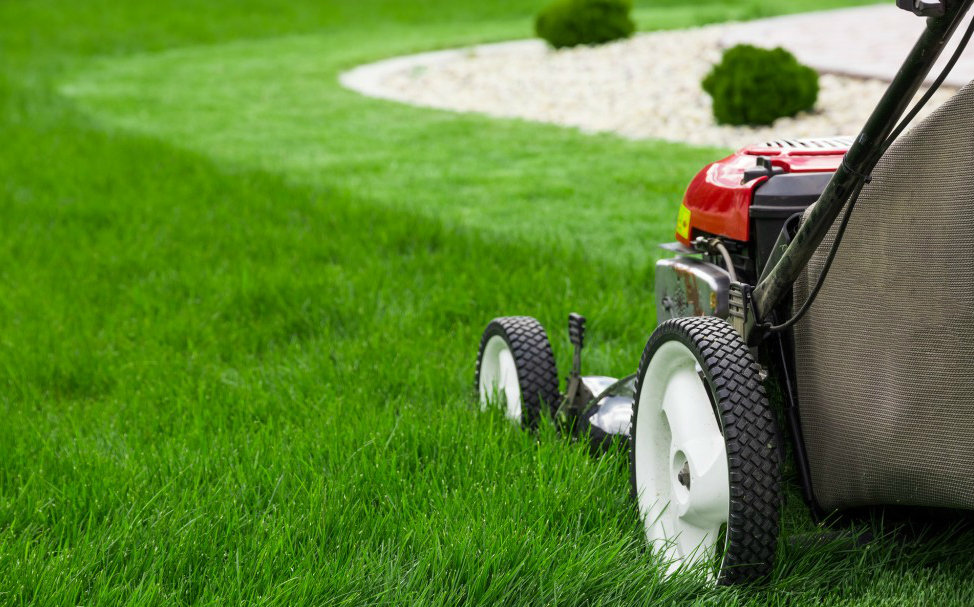How to Grow Grass
BY JILL RAMONE | NOVEMBER 15TH, 2019 | LAWN CAREStarting a lawn from seed can be a daunting task, but one that is well worth it. Once you establish a new lawn — or fill in bare spots — the lush, green grass is a reward in and of itself. Here is how to grow grass.
Planting Grass From Seed
Planting grass seed is not as simple as it sounds. Before you start seeding, get the yard ready.
- Clear the way. Get rid of old weeds, but keep the topsoil.
- Aerate the soil so necessary oxygen and nutrients can reach the soil where your new grass will take root.
- Test the soil for the pH, neutralizable acidity, potassium, calcium, magnesium, and organic matter. Make amendments if the soil pH is below 6.0 (too acidic) or above 7.0 (too alkaline).
- Measure the amount of sun and shade the lawn will receive.
- Spread the seeds using a push or hand-crank spreader.
- Fertilize.
- Cover the area with about an inch of soil. You can also use mulch and straw, as long as you can see the seeds below.
When To Seed
The “when” of how to grow grass depends on what type of grass you’re planting. The time of year makes a difference in how well your new lawn will establish itself. If you’re planting in a warmer climate, like the southern part of the United States, warm-season grasses like Zoysia and Bermudagrass will work best in your yard. Plant those warm-season grasses in the late spring — late May through early June. As the name suggests, this grass type thrives in warmer temperatures better than the cool-season grasses. Cool-season grasses tolerate deep freezes better. That’s not to say they will stay green through the winter, but the cold won’t kill the roots. Examples of cool-season grasses include Kentucky bluegrass and tall fescue. It’s best to plant this grass type in the early fall.
After Seeding
The crucial part of planting grass seed is water. New grass needs lots of water, especially if you live in a drier climate, or it hasn’t rained. “As the seed germinates and seedlings begin to grow, it’s essential the new seedlings are not allowed to dry out. Continue to water the seedlings two to four times a day if the weather conditions are dry,” advises Clark Throssell, a turfgrass specialist at Purdue University. Once you get the grass seed growing, you want your new grass to grow into a healthy lawn. You may need to set your automatic sprinkler if it has a timer. If not, be sure to get outside to check on your new grass every day until its established. These rules also apply if you’re overseeding an existing lawn and trying to fill in bare spots.
Mowing New Turf

You can start mowing and regular lawn maintenance once the new grass gets a couple of inches high. Try to keep the soil moist and foot traffic to a minimum until your lawn has reached that stage and matured a bit.
Proper Mowing Height, by Grass Type
The exact mowing height depends on what kind of grass you have:
- Bahiagrass: 2-2½ inches.
- Bentgrass: 1 inch.
- Bermuda: 1½-2 inches.
- Bluegrass: 2-2½ inches.
- Buffalograss: 2-3 inches
- Centipede: 1½-2 inches.
- Fescue: 2-3 inches.
- Perennial Ryegrass: 2-3 inches.
- Zoysia: 1-2 inches.
Easy Does It on Weed Killer
Don’t rush to put down weed killer right away, even if you see weeds popping up. New grass is delicate, and herbicides can do damage to even the best grass when it’s starting to germinate. Only consider putting down weed killers — whether pre-emergent or post-emergent — after you have mowed the new lawn several times. Weed control comes only after you have established your healthy lawn.
Growing grass takes time and patience — thus the cliche, “watching the grass grow.” If you’re in a hurry to establish a lawn and don’t have time to plant grass seed, consider laying down sod. This will be a little more expensive, especially if you have large areas to cover, but it won’t take nearly as long.
It’s not a quick process, and in order to have a healthy green lawn, you will need to make the right preparations. But if you follow the recommendations that best suit your climate and your yard, you will be rewarded by the thick, beautiful lawn you want.